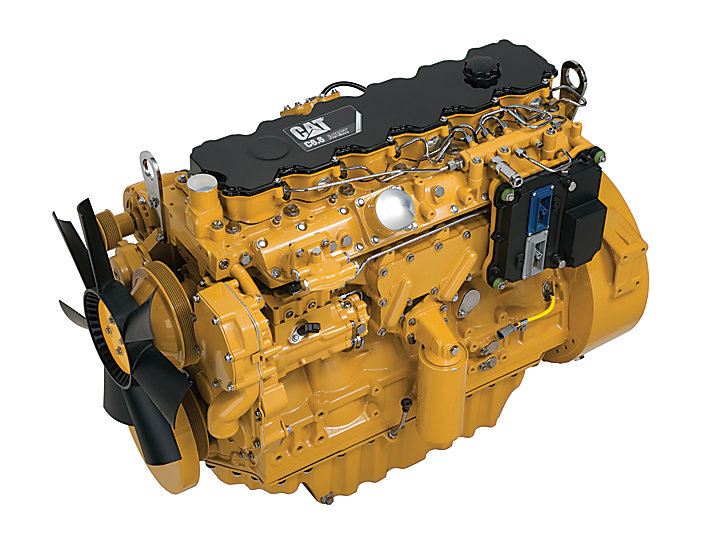Do not turn the heat switch to the Heat position if the engine is warm and running, as engine damage can result.
Caterpillar (www.caterpillar.com) publishes Cold Weather Recommendations for All Caterpillar Machines, (Excerpted from Operation & Maintenance Manual, SEBU5898-11-01). Further, Caterpillar organizes the document about construction machinery and heavy equipment in cold weather and low temperatures in the following five topical sections of information, operation, maintenance, reference information, and index.
In the second of the five topical sections in Cold Weather Recommendations for All Caterpillar Machines, Operation Section, Starting Recommendations, Engine Starting Information, Caterpillar divides cold weather into the following four categories based on temperature ranges. Accordingly, review daily reports, outlook reports, and real-time reports to make better-informed decisions about the probability and intensity of low temperature events.
Categories of Cold Weather
- Category 1
- 48 to 15 °F
- 9 to −9.5 °C
- Category 2
- 15 to 0 °F
- −9.5 to −18 °C
- Category 3
- 0 to −22 °F
- −18 to −30 °C
- Category 4
- −22 to −40 °F
- −30 to −40 °C
In the section about Engine Starting with Starting Aid (SMCS Code: 1000; 1090; 1456; 7000*), Diesel Engines That Are Equipped With Gasoline Starting Engines and Glow Plugs, Caterpillar recommends the following ten steps, warning construction machinery and heavy equipment operators to “…not turn the heat switch to the Heat position if the engine is warm and running…” as engine damage can result.
Diesel Engines That Are Equipped With Gasoline Starting Engines and Glow Plugs
1. Place the lever that is used to release compression into the START position. Move the governor control lever to the SHUTOFF position.
2. Start cranking the diesel engine with the gasoline starting engine’s transmission in LOW speed.
3. After the diesel engine cranks freely, disengage the clutch for the gasoline starting engine. Shift the transmission for the gasoline starting engine to HIGH speed. Engage the clutch for the gasoline starting engine. Crank the diesel engine for several minutes in order to warm the engine. Cranking the diesel engine will also bring the oil pressure to the NORMAL range on the gauges. Also, the pressure for the diesel fuel should register NORMAL.
4. Disengage the clutch for the gasoline starting engine, but allow the gasoline starting engine to run.
5. Turn the heat switch for the glow plug to the HEAT position. Allow the glow plug to operate for two to five minutes. Do not crank the diesel engine.
6. After warming the engine with the glow plug, move the lever that is used to release compression into the RUN position. Engage the clutch in order to crank the diesel engine.
7. With the heat switch in the ON position, allow the gasoline starting engine to crank the diesel engine. Continue cranking the diesel engine until normal cranking rpm is achieved.
NOTICE: Start the diesel engine with the starting engine transmission in High only.
8. While you crank the engine with the heat switch in the ON position, move the governor control lever to the HIGH IDLE position.
9. Keep the heat switch in the ON position until the engine starts and the engine runs smoothly. After the engine starts, reduce the rpm of the engine.
NOTICE : Do not turn the heat switch to the Heat position if the engine is warm and running. Engine damage can result.
10. Disengage the clutch for the gasoline starting engine. Turn off the fuel for the gasoline starting engine. Continue to run the gasoline starting engine until the engine’s carburetor bowl is dry.
*SMCS is Service Management Control System, a four-digit code that describes the components of Caterpillar construction machinery and heavy equipment. Each digit of the four digit SMCS code signifies a progressively narrower range of Caterpillar machinery and equipment. For example, the four digit SMCS code 1202 refers to 1000 = engine, 1200 = short block engine, 1202 = crankshaft for the short block engine.
(Source: Caterpillar, Cold Weather Recommendations for All Caterpillar Machines, Excerpted from Operation & Maintenance Manual, SEBU5898-11-01)
(Image: Caterpillar C6.6 ACERT™, C6.6 ACERT Tier 4 Diesel Engines – Highly Regulated)
More in the next blog about weather planning, Weather Controls™ and weather risk management in the construction industry and built environment…
